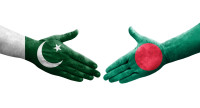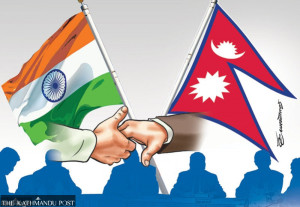Columns
Nepal's apparel sector at a crossroads
The industry has the potential to create a niche market centred on sustainable apparel manufacturing.
Roshee Lamichhane
The garment sector of Nepal is at a critical juncture as it is set to graduate from the Least Developed Country status in November 2026. Nepal is likely to face higher tariffs and tough policies of rules of origin. The apparel sector, in particular, boasts the usage of traditional hand-woven designs such as Dhaka fabrics, allo (Himalayan Nettle), felt, and cashmere fabric made into apparel. These fabrics are used with modern designs, providing our local artisans an edge over others. Nepal continues to enjoy duty-free entry into the European Union under the Everything but Arms (EBA) program. The global apparel market is projected to grow from USD 1.9 trillion in 2025 to USD 2.6 trillion by 2035. By incorporating sustainable, ethical and locally designed organic products produced by local artisans, Nepal can utilise this opportunity to create a niche in the global market. However, whether Nepal can develop a robust, self-sustaining export ecosystem and overcome its reliance on tariff exemptions remains to be a central challenge.
Fragile export momentum
Nepal has seen a slight but precarious increase in its exports of ready-made clothing in recent years. In the first nine months of FY2023-024, the nation exported readymade garments and pashmina shawls worth Rs12.23 billion, which is a steady increase over previous years. Along with carpets and pashmina, textiles and clothing are included as one of Nepal's promising export industries in the National Trade Integration Strategy 2023 (NTIS 2080). The current growth seems to be more like the result of short-term external changes, including higher tariffs on commodities from Bangladesh and India, than of significant structural changes within the Nepali sector. A few medium-sized and large businesses dominate the industry, whereas many smaller businesses face challenges like obsolete technology, erratic orders and inadequate funding. Insufficient government support is another reason cited by exporters. For instance, this fiscal year, Rs35 million was set aside for export financing, which is inadequate. The government stopped providing funds to help exporters organise domestic fairs.
Structural bottlenecks
Nepal’s garment sector has huge prospects, but structural flaws pose as constraints. Problems such as a lack of availability of skilled manpower, a lack of investment in skill development, and productivity restrictions restrict the ability to carry out large orders and result in high unit labour costs. Logistical inefficiencies also hamper growth in exports. In addition to customs delays, long transit stopovers, and limited warehouse capacity that further undermine competitiveness, being landlocked significantly increases operating costs. Exporters still mostly depend on freight agreements managed by foreign parties. Another significant issue is the absence of current trade and market intelligence. Timely information on buyer requirements, pricing benchmarks and market developments is lacking for exporters. Similarly, even though international buyers are increasingly sourcing through digital means, digital marketing and online trade show participation have only just begun. Inadequate infrastructure and poor branding exacerbate the issue. For example, Nepal currently does not have an established testing and certification system to ensure compliance with international standards, as well as a recognised collective trademark for apparel, unlike Chyangra Pashmina, which holds a registered trademark in more than 40 countries.
Graduation challenge
Nepal's exports could drop by almost 4.3 percent as it graduates from the LDC category in 2026. The reduction of advantageous tariffs will mostly affect carpets, clothing, and synthetic textiles, especially in markets like China, the EU, and Turkey. To lessen the damage, Nepal must negotiate the GSP+ or other preferential agreements, even though the EU has extended EBA privileges until 2029. In the absence of concurrent enhancements in production efficiency, logistics, and infrastructure, the elimination of tariff preferences will reveal long-standing structural flaws that preferential access has just covered up. The Bangladesh case is worth emulating. Given an enabling ecosystem consisting of efficient infrastructure, green factory certifications, proactive trade diplomacy, skill development, and the Made in Bangladesh campaign, Bangladesh today has attained the position of the second-largest garment exporter in the world.
Institutional and policy imperatives
Nepal must adopt an integrated strategy to navigate the current challenges. It is urgent to ensure market intelligence activities are initiated and trade is digitalised. The Trade Information Portal should be maintained as a comprehensive knowledge base that offers seller and buyer databases, export data in real time, tariffs, and other logistics-related information. The government should allocate sizable funding for export promotion both in domestic and international markets. The budget must be allotted for online and digital marketing, as well as sizable funds for research and development. Online and hybrid trade shows can provide publicity for SMEs that cannot afford to participate physically in trade fairs abroad.
To enhance human capital, training facilities for textile and fashion must be set up, in collaboration with private manufacturers and academic institutions. The government should sponsor internships overseas to train technicians and managers about global production standards. Likewise, testing and certification facilities must be set up to guarantee the quality standards of apparel products like Dhaka, Allo, Pashmina, hemp, felt, and others using a combination of organic cotton and banana fabric. These would be the basic requisites to do well in the international markets.
Another major priority should be to improve logistics. Multimodal transport systems that integrate air, rail and road freight can reduce transit times and lessen reliance on foreign ports. Investment is required to simplify export operations in digital customs systems, consolidation warehouses and dry ports. Initiation must be taken to negotiate alternative seaport access in India. Financing support is equally crucial. Low-interest credit, loans without collateral and streamlined tax refund procedures are crucial for export-focused SME apparel businesses. Interest subsidy programs, such as those in Vietnam and India, should be initiated to improve the competitiveness of the sector.
A decisive step would be the establishment of a Textile and Clothing Development Council under the aegis of the Ministry of Industry, Commerce, and Supplies (MoICS). It should serve as a platform to coordinate between the government, corporate sector, and development partners while enlisting support for investment, talent development, and quality assurance. To implement NTIS priorities and create new marketing and branding strategies, the council should work closely with the Garment Association of Nepal (GAN) and the Trade and Export Promotion Centre (TEPC).
A collective ’Made in Nepal’ trademark supported by reliable certification of moral and environmentally responsible production should be initiated. The "Chyangra Pashmina" trademark has set a precedent. Extending similar trademarks and securing geographical indication (GI) to fabrics from Dhaka, Allo, and Hemp would ensure traceability and enhance consumer trust. Such certification of the quality of materials used and the right marketing strategies, including proper branding, ensures distinct positioning and creates competitiveness. The apparel industry now needs to move to a brand-driven model. It is no longer feasible to compete on cost. Nepal's apparel and garment industry has the potential for change if government, industry, and development partners collaborate to revive trade and market intelligence, facilitate logistical hurdles, and devise appropriate marketing and branding strategies, including the exploration of new markets. The demand for ethical and ecological fashion is growing. With the right policy support from the government, Nepal’s apparel industry can create a niche market centred on sustainable apparel manufacturing and branding.




 19.12°C Kathmandu
19.12°C Kathmandu.jpg)















